…And at this point I’m running out of steam for a lengthy post, so here’s the Cliff Notes. (Don’t worry. Marksburg Castle wasn’t that interesting anyway.)
This is Marksburg Castle:

This is the outer gate:
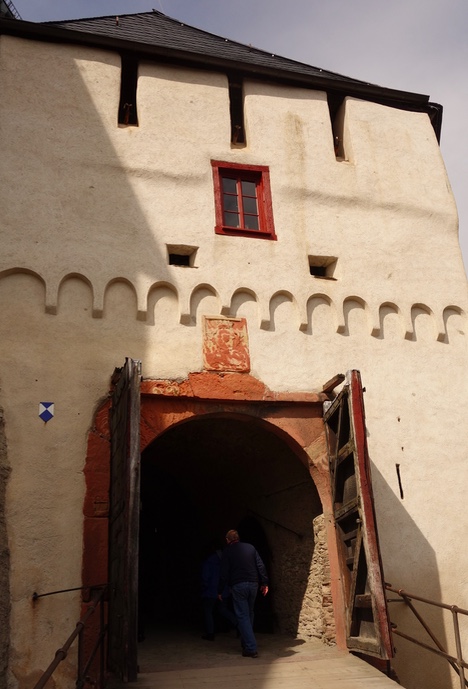
This is what you walk through:
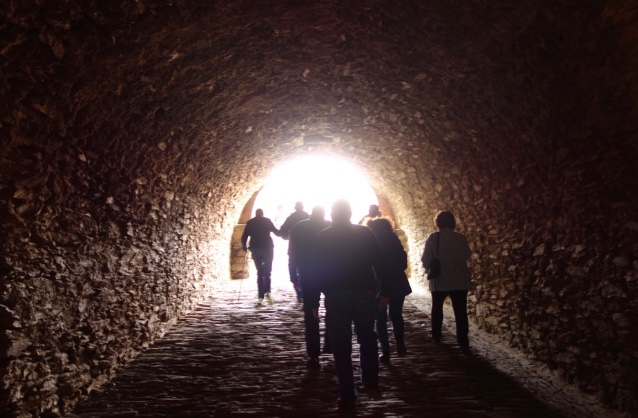
This is the inner gate:
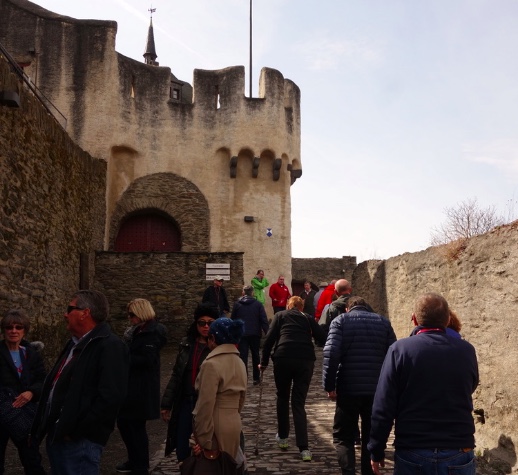
And below is the inner inner gate. Are you tired of gates yet? So are the would-be besiegers.
Like many castles, Marksburg was built layer on layer, beginning in the 13th century and continuing right on through the 17th. In fact, many of the doorways have been visibly made smaller; if you look at the photo below, you can still see the original frame embedded in more recent stonework. This is because doorways were initially made tall enough for a mounted knight to ride through. As knights became obsolete and gave way to musketeers and arquebusiers and so forth, the doorways were narrowed to make them more easily defensible.
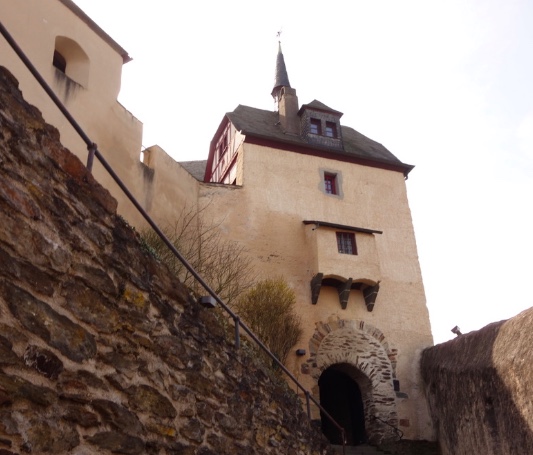
Here’s the inner-inner-inner gate. (It has a more intelligent name in German.)
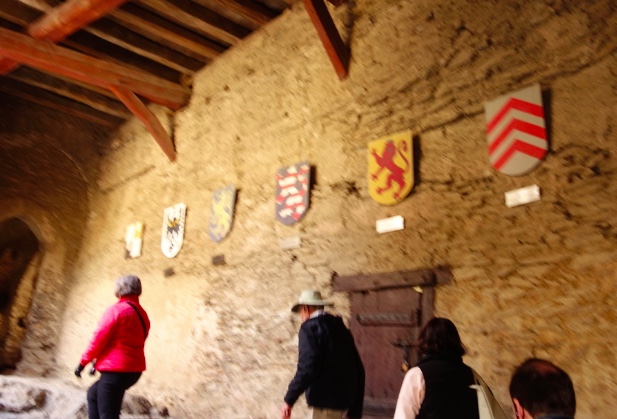
One of the interesting things about all of Marksburg’s various walks and courtyards is that they’re all sloped. Since the castle is built basically on a rocky spire, the ground is too uneven for cobblestones or stairs. Mostly you’re just climbing over whatever the hillside would look like naturally. This is the closest Marksburg gets to actual stairs:
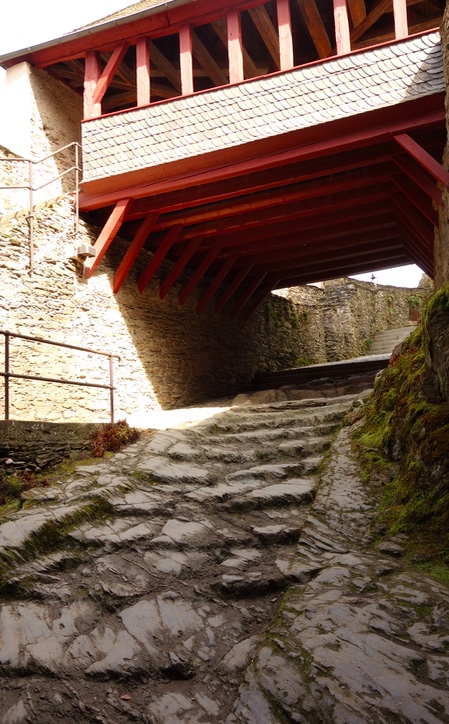
Here’s another interior courtyard. I never actually figured out my way around. The castle is tiny, but incredibly convoluted and cramped.
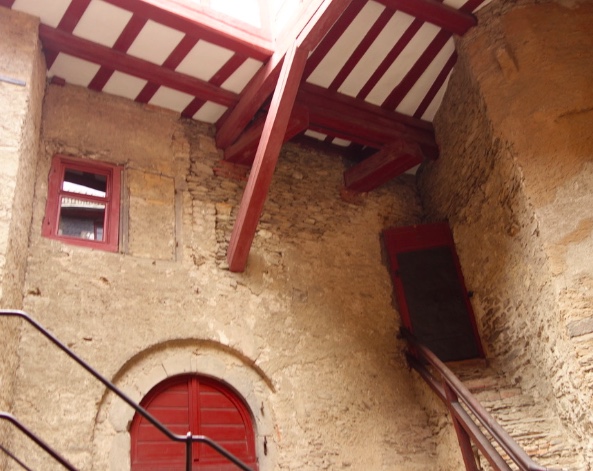
Here’s a kitchen (reconstructed, of course.) None of Marksburg’s original interiors survive.
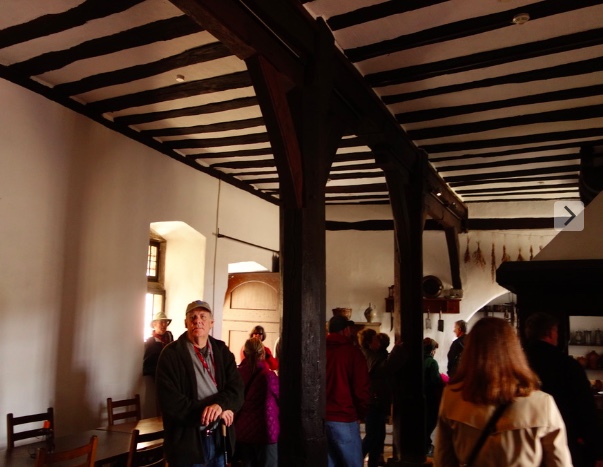
Here’s a bedchamber. Unfortunately, from this angle, you can’t see the bed. It’s impressively tiny—only about four feet long. Yes, people were smaller in that era, but they weren’t that small. Turns out, sleeping full-length was considered unhealthy. People slept as best they could sitting up, with lots of pillows to lean on.
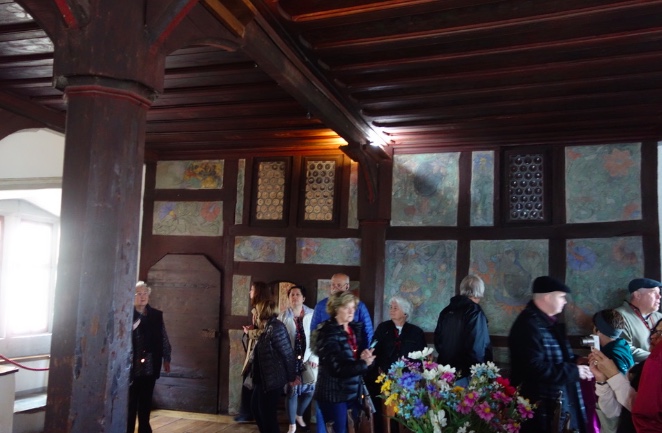
Finally, here’s the pathetic thing billed as the torture chamber. (It was actually the stable.)
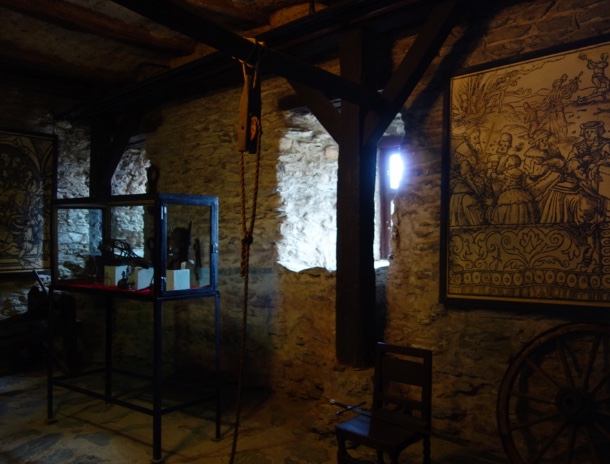
The only interesting thing about the “torture chamber” is that the ceiling is original 12th-century.
In the absence of an actual torture chamber, I can furnish only interesting torture chamber facts. For one thing, punishment without confession was illegal. There seems to be a little cognitive dissonance in the fact that it was totally legit to torture a confession out of someone, but there you go.
Also, if the offender was a serf, the first resort was often public humiliation—a stint in the stocks, or this really odd-looking metal face mask—because crippling your serfs defeats the purpose of serfs.